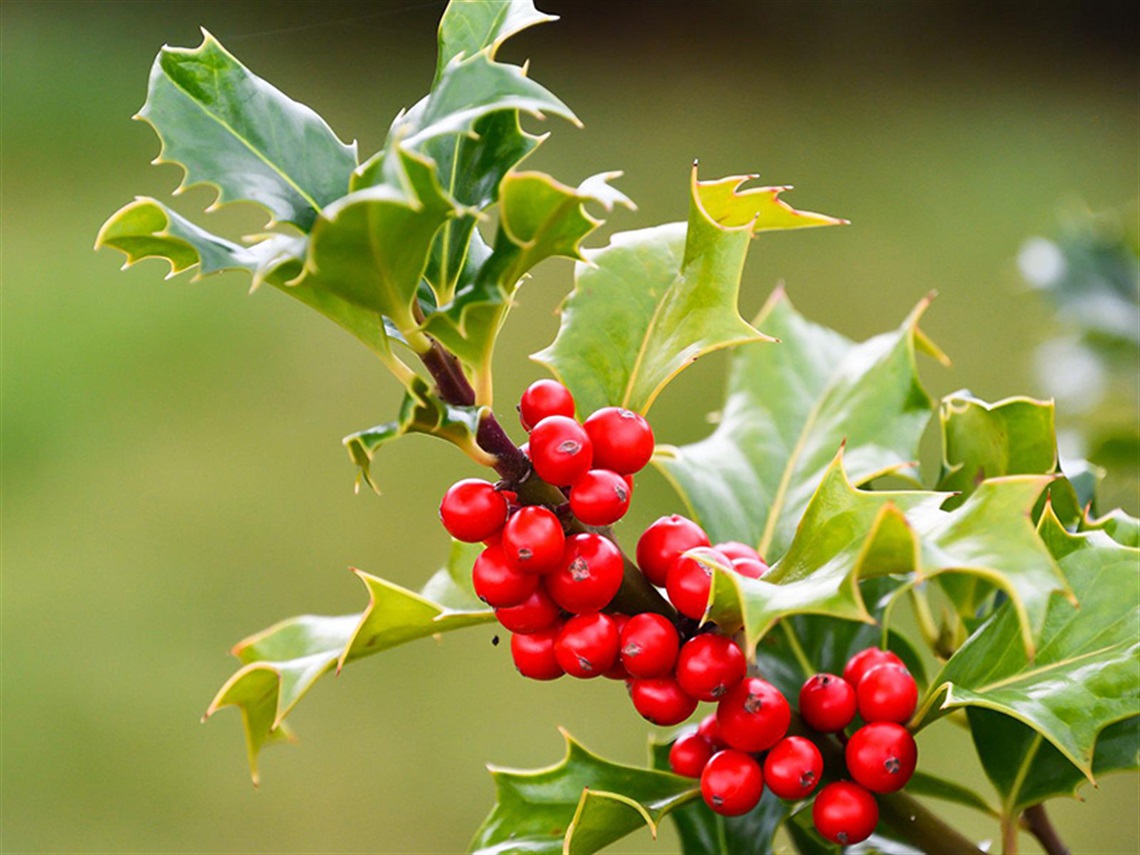Holly

Ilex aquifolium
Origin: West and southern Europe
Size: 6 to 15 m H
Best removal time: September to April
Flowers: November to March
Fruits: April to June
What it does
Holly readily regenerates, forming dense thickets. It invades moist bushland areas and seriously impacts and threatens the indigenous plant life of the Yarra Ranges by out-competing local species.
What it looks like
Holly is a dense evergreen small tree/large shrub with prickly dark green leaves. The tiny male and female flowers are on separate plants. The fruit is a roundish green berry, maturing to red. It is toxic.
How it spreads
- birds and animals eat the red berries then travel across large areas depositing seeds in droppings
- by seeds, root suckers when plants are damaged, or by layering of branches when they touch the ground with soil movement or on machinery
- dumping of garden waste in bushland and on roadsides
- sold by some nurseries, fetes and markets. Buyer beware!
Removal
Do not treat Holly during winter as the tree is dormant and will not take up the poison.
Remove by hand
They are often difficult to pull out due to strong roots, however, small seedlings can be removed when soil is moist. Do not hand pull if all the roots cannot confidently be removed as they will resprout.
Cut and paint
Cut the shrub off at ground level and paint stump immediately with an undiluted glyphosate-based product. This is useful for larger seedlings or small shrubs that are too hard to hand pull.
Drill and fill
Drill holes 2-3cm in the trunk as close to the root as possible. Fill each hole immediately with an undiluted glyphosate based product. The tree will then slowly die and may need to be removed later. This is useful when you do not want to open a hole in the canopy by removing a large tree. Repeat treatments may be required over 12 months.
Indigenous alternatives to plant
Many large shrub or small tree alternatives indigenous to the Yarra Ranges region are available and would make great substitutes for Holly. Some alternatives include:
Victorian Christmas Bush, Prostanthera lasianthos
Muttonwood, Myrsine howittiana
How to dispose of weeds
By disposing of environmental weeds correctly you can prevent re-infestation on your property and elsewhere.
- Landfill (Weed Wipeout Tip vouchers available for some species).
- Green waste bins ensure that weeds are not able to spread.
- Woody weed stems can be bundled for green collection twice per annum.
- Composting (excluding seed heads or species with vegetative reproduction, e.g. Wandering Trad).
- Burning in accordance with Council and the Country Fire Authority (CFA) prescribed burning periods and regulations.
- Recovery and transfer stations available for weed tipping are Healesville, Wesburn, Coldstream, Lysterfield and Montrose.
Using chemicals
Non-chemical treatment is often the most effective and safe option especially on smaller scale infestations.
Where chemical use is undertaken:
- Always follow the manufacturer’s guidelines when using chemicals.
- Wear protective clothing and eyewear.
- When purchasing your herbicide, always ask for a Materials Safety Data Sheet (MSDS) or refer to the manufacturer’s website for specific safety guidelines and information.
- Some herbicides will kill other plants and not just the target species.
- When used near waterways herbicides can be very poisonous to aquatic life.
- Use chemicals sparingly and be sure that you are using the right chemical and application technique.
- Ensure the weather conditions are suitable (e.g. minimal wind and no rain expected).
- Apply herbicides at the correct time during the plant’s growth cycle so you get the best results.